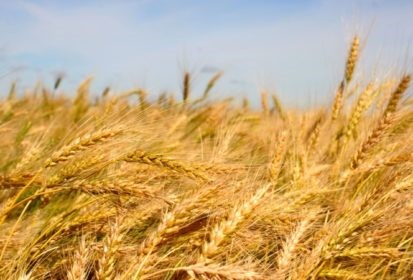CNS Canada — While it’s too early to assess how the western Canada winter wheat crop fared this winter, there is some uncertainty due to unseasonably cold April temperatures.
“We start losing cold tolerance, especially in March and going into April now. And that’s when you need to monitor temperatures or for (the crop) to be covered up if you do get some cold temperatures,” said Doug Martin, chairman of Winter Cereals Manitoba and a farmer near East Selkirk.
Temperatures across the Prairies have dipped to the -20 C or lower range throughout the end of March and start of April. Temperatures are normally higher than 0 C at this time of year.
While Martin didn’t get any winter wheat seeded himself this year, due to the dry conditions last fall, his neighbours did. Based on conditions around his area, Martin had thought his neighbours’ crops would fare well for most of the winter, but now he isn’t as sure.
“We had a snowfall (in March) which was great and got the crop covered up, but since then we’ve had some melting and now some really cold temperatures.”
In Saskatchewan the situation has been worse; the majority of the southern portion of the province was bare for most of the winter up until the early March snowstorm.
“We’re very short on moisture and we need more and we need some rain this spring definitely. But the snow will help for sure,” said Amanda Swanson, a southern Saskatchewan winter wheat agronomist with Ducks Unlimited.
Swanson is optimistic about this year’s winter wheat crop. While the winter has been unseasonably cold and dry, she said it’ll all depend on the spring conditions. A warm, wet spring will be good for winter wheat, while a cold, dry spring could cause damage.
Ducks Unlimited won’t have an idea of how the winter wheat crop fared until at least early April. Normally agronomists hold off on doing assessments and digging up plants until producers are seeding or almost halfway done.
“We don’t want growers to be worried that they’re going to have to write off their winter wheat fields. Again our message is always for guys to be patient when doing spring assessments,” Swanson said.
According to Swanson, there have been a few areas of Saskatchewan where soil temperatures have come close to causing damage. Winter wheat can handle soil temperatures as cold as -16 C.
Even if there are crops facing a little bit of damage, she said, good spring conditions will help the crop to bounce back.
“I’m hopeful that most of the winter wheat out there made it through the winter, especially those crops that made it to the three-leaf stage in the fall.”
Western Canadian farmers seeded 335,000 acres of winter wheat last fall, down from 535,000 the previous year, according to Statistics Canada.
— Ashley Robinson writes for Commodity News Service Canada, a Glacier FarmMedia company specializing in grain and commodity market reporting. Follow her at @ashleymr1993 on Twitter.




